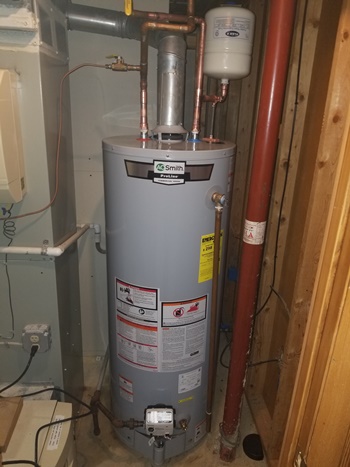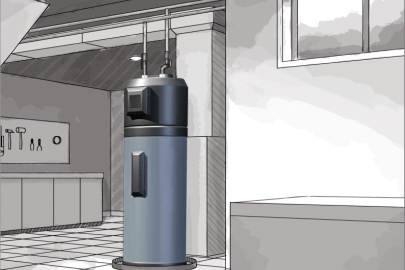Straightforward Methods to Maintain Your Home's Hot Water System Properly
Straightforward Methods to Maintain Your Home's Hot Water System Properly
Blog Article
Are you currently in search of help and advice on How to Maintain a Hot Water Heater in a Few Simple Steps?

Hot water is necessary for everyday comfort, whether it's for a refreshing shower or washing dishes. To ensure your hot water system runs effectively and lasts much longer, normal upkeep is vital. This article gives sensible tips and insights on how to keep your home's warm water system to avoid disturbances and pricey fixings.
Intro
Preserving your home's hot water system may seem difficult, but with a couple of simple steps, you can ensure it runs efficiently for several years ahead. This guide covers everything from recognizing your warm water system to DIY upkeep tips and knowing when to contact specialist assistance.
Importance of Preserving Your Hot Water System
Routine maintenance not just extends the life expectancy of your warm water system but additionally ensures it runs efficiently. Overlooking upkeep can cause decreased performance, greater energy costs, and even early failing of the system.
Indications Your Hot Water System Requirements Maintenance
Recognizing when your hot water system requires interest can prevent significant issues. Keep an eye out for signs such as irregular water temperature, weird noises from the heating system, or rustic water.
Recognizing Your Hot Water System
Prior to diving into upkeep tasks, it's helpful to comprehend the fundamental components of your hot water system. Normally, this includes the hot water heater itself, pipes, anode poles, and temperature controls.
Regular Monthly Maintenance Tasks
Routine month-to-month checks can assist capture minor concerns before they intensify.
Flushing the Water Heater
Purging your water heater eliminates debris buildup, boosting efficiency and extending its life.
Monitoring and Replacing Anode Rods
Anode poles prevent rust inside the container. Examining and replacing them when broken is crucial.
Checking and Readjusting Temperature Setups
Readjusting the temperature setups makes certain optimal efficiency and safety and security.
DIY Tips for Maintenance
You can execute several maintenance jobs on your own to maintain your warm water system in top condition.
Looking for Leakages
Routinely examine pipes and connections for leakages, as these can lead to water damage and higher expenses.
Examining Pressure Relief Valves
Checking the pressure safety valve guarantees it functions correctly and avoids too much stress buildup.
Insulating Pipes
Protecting warm water pipelines lowers heat loss and can save energy.
When to Call an Expert
While do it yourself upkeep is beneficial, some concerns call for specialist proficiency.
Complex Concerns Calling For Professional Aid
Instances consist of significant leakages, electric troubles, or if your hot water heater is consistently underperforming.
Regular Expert Maintenance Advantages
Expert maintenance can include extensive evaluations, tune-ups, and guaranteeing compliance with safety standards.
Conclusion
Regular maintenance of your home's warm water system is essential for efficiency, longevity, and cost savings. By following these tips and recognizing when to look for specialist assistance, you can guarantee a trusted supply of hot water without unexpected disruptions.
How to Maintain an Instant Hot Water Heater
Before tinkering with your hot water heater, make sure that it’s not powered on. You also have to turn off the main circuit breaker and shut off the main gas line to prevent accidents. Also turn off the water valves connected to your unit to prevent water from flowing into and out of the appliance. 2. When you’re done, you have to detach the purge valves’ caps. These look like the letter “T†and are situated on either side of the water valves. Doing so will release any pressure that has accumulated inside the valves while at the same time avoid hot water from shooting out and burning your skin. 3. When the purge valves’ caps are removed, you have to connect your hosing lines to the valves. Your unit should have come with three hoses but if it didn’t, you can purchase these things from any hardware or home repair shops. You can also get them from retail stores that sell water heating systems. Read the user’s manual and follow it to complete this task properly. When the hosing lines are connected, open the purge port’s valves. 4. You should never use harsh chemical cleaners or solutions when cleaning your unit. Make use of white vinegar instead. It should be undiluted and you’ll probably use about 2 gallons. 5. Now flush your water heater. This task should probably take about 40 minutes. We can’t give you specific directions for this because the procedure is carried out depending on the type, model and brand of your heater. With that being said, refer to the user’s manual. 6. When you’re done draining the unit, you have to turn off the purge port valves again. Remove the hosing lines that you earlier installed on each of the water valves. Put the valve caps (purge port) back in their respective places and be very careful so as not to damage the rubber discs that are found inside these caps. 7. Now that everything’s back in place, check your user’s manual again to find out how to reactivate your water heating system. 8. Once it is working, turn one of your hot water faucets on just to let air pass through the heater’s water supply pipes. Leave the tap on until water flows smoothly out of it. https://www.orrplumbing.com/blog/2014/september/how-to-maintain-an-instant-hot-water-heater/

We had been introduced to that article on What Kind of Maintenance Do Water Heaters Need? from a pal on another web blog. Loved our review? Please quickly share it. Let someone else check it out. We treasure reading our article about How to Maintain a Hot Water Heater in a Few Simple Steps.
Set Up An Appointment Report this page